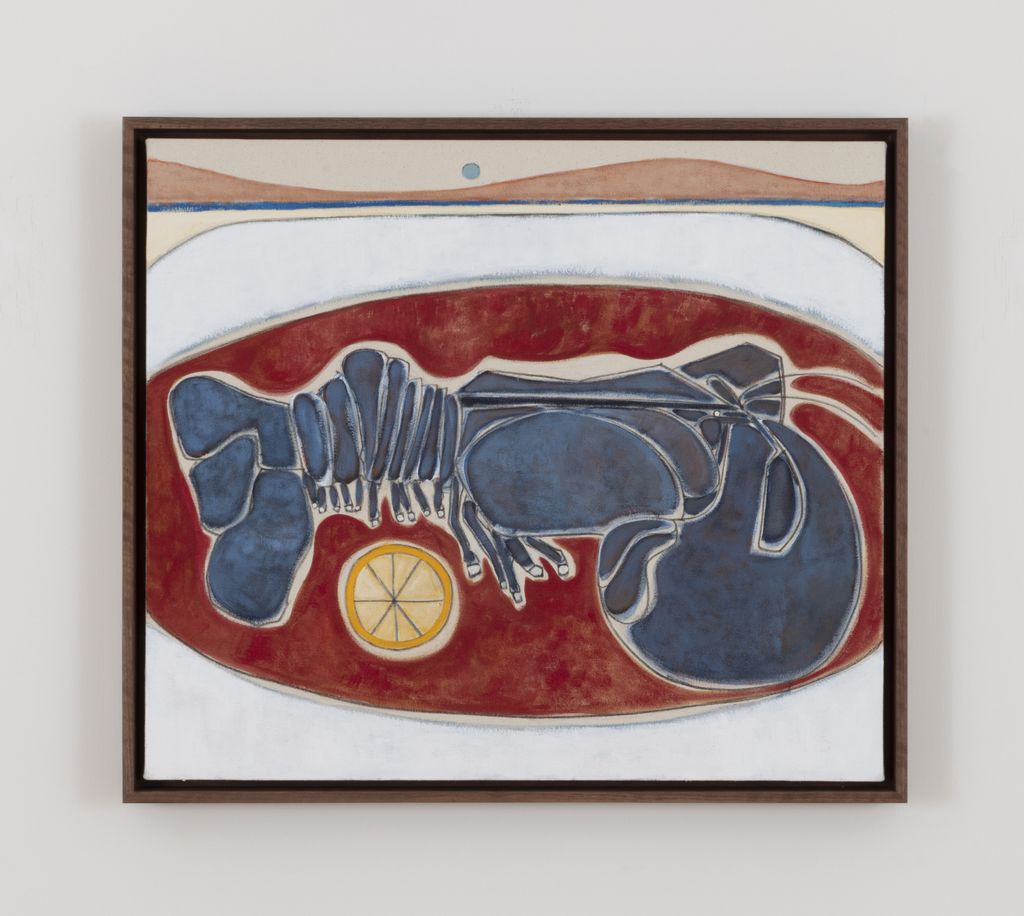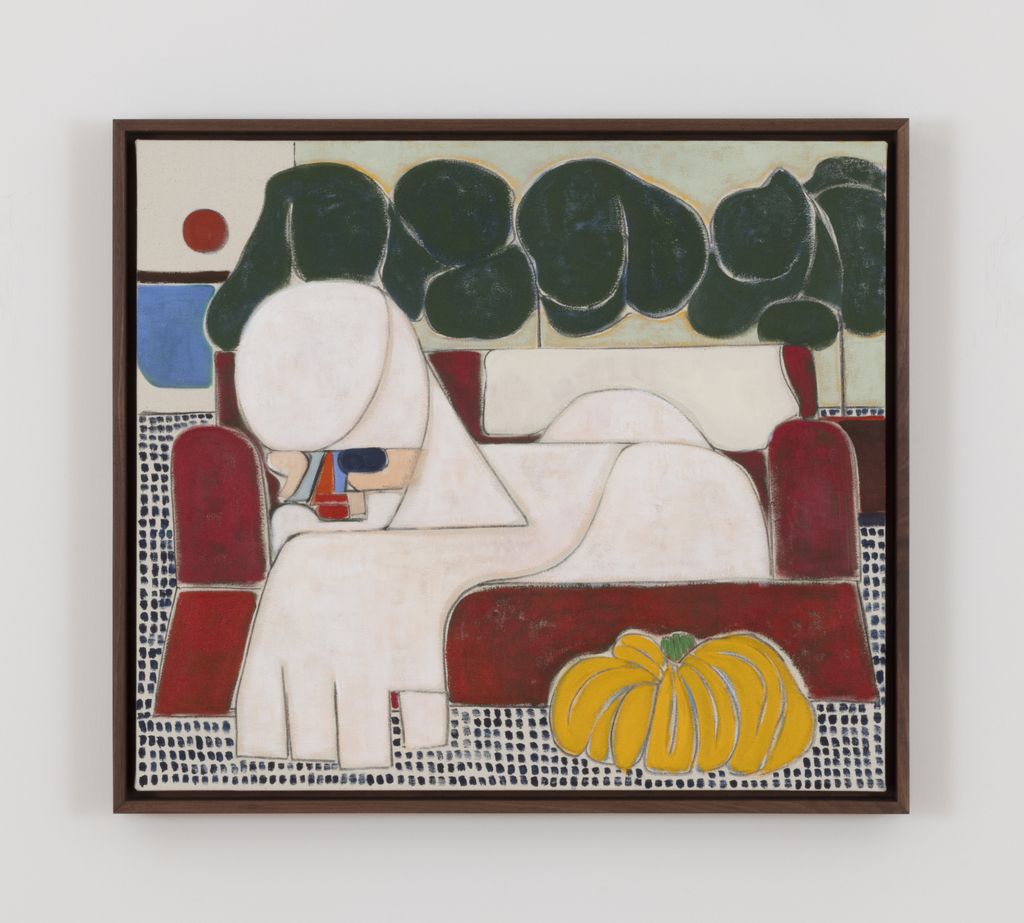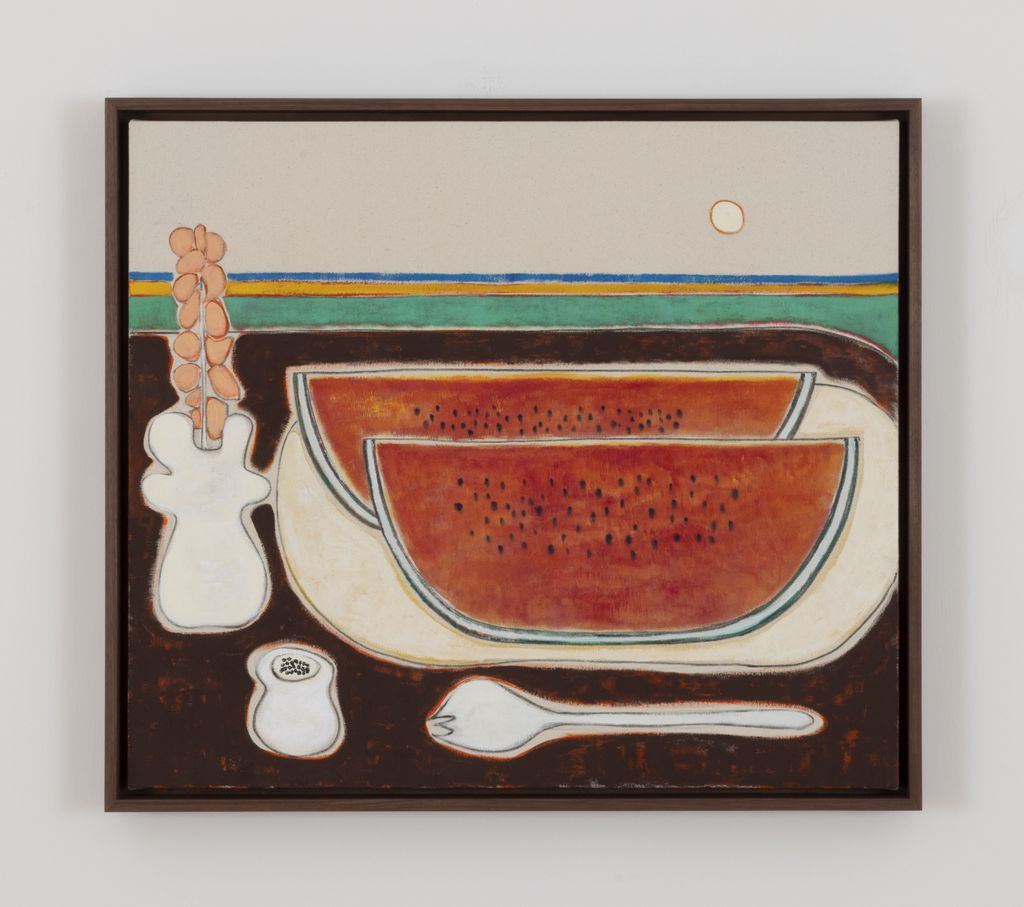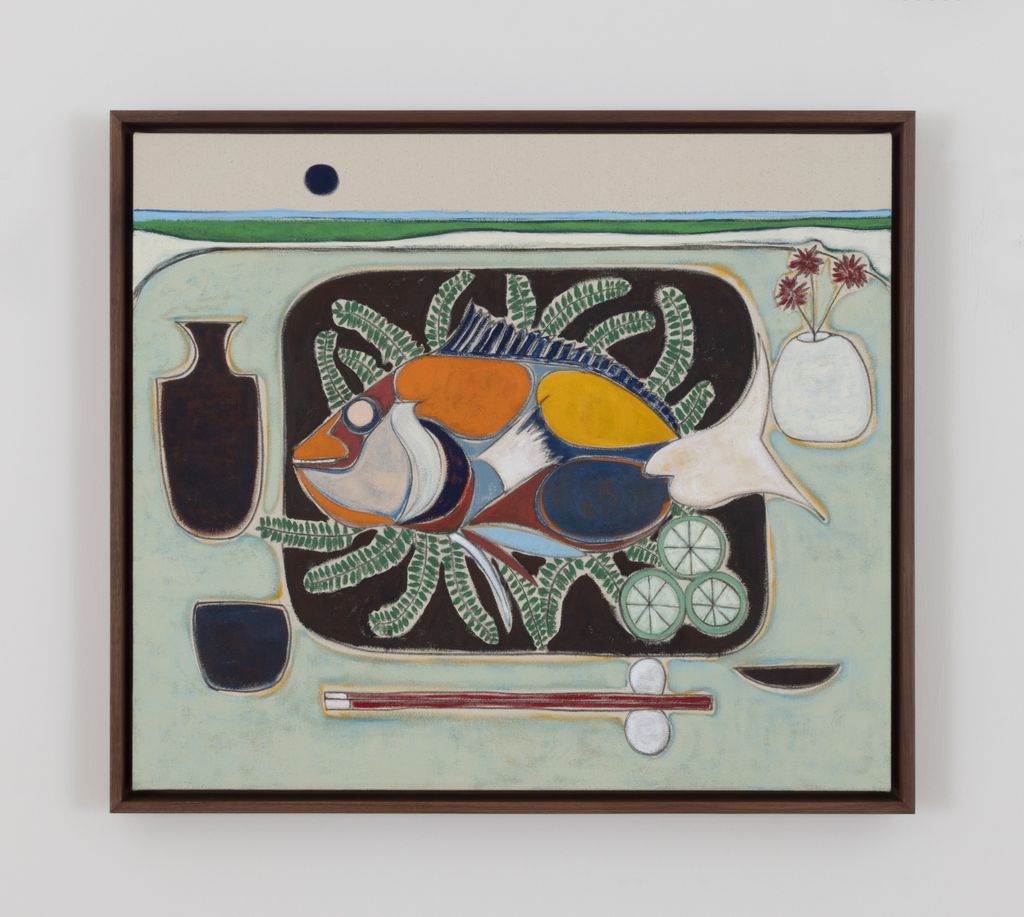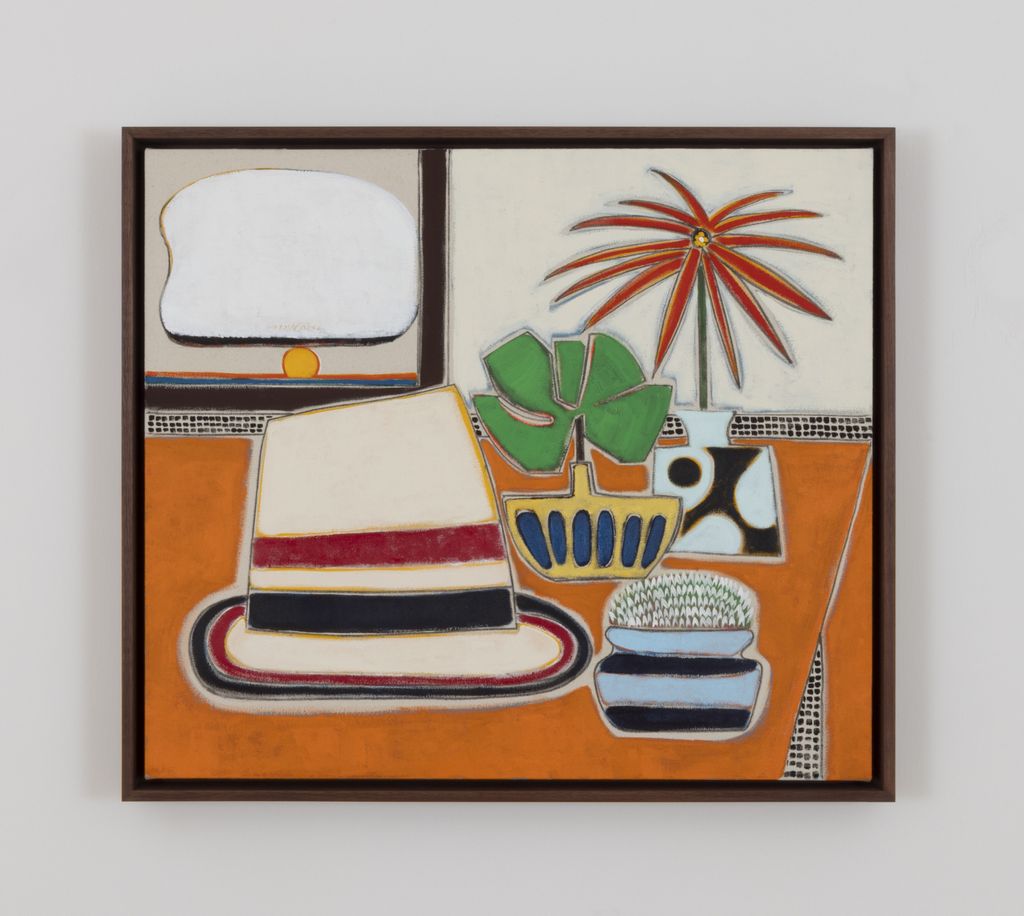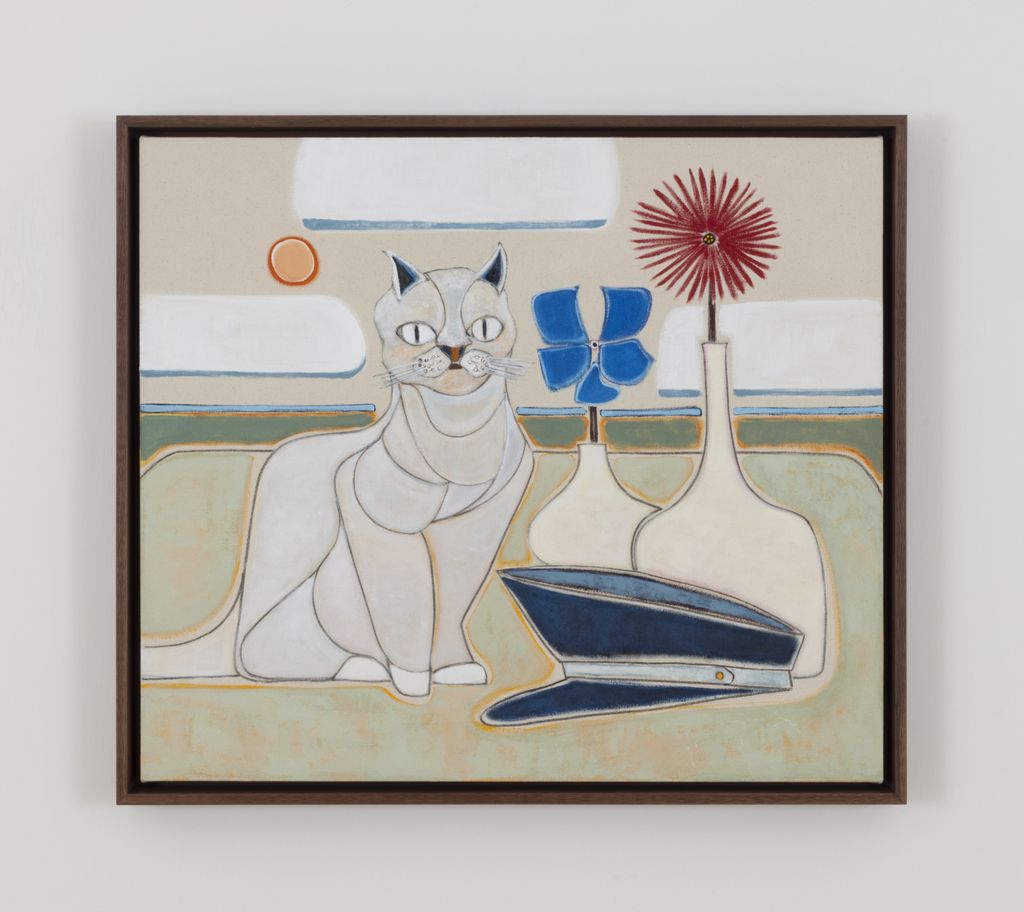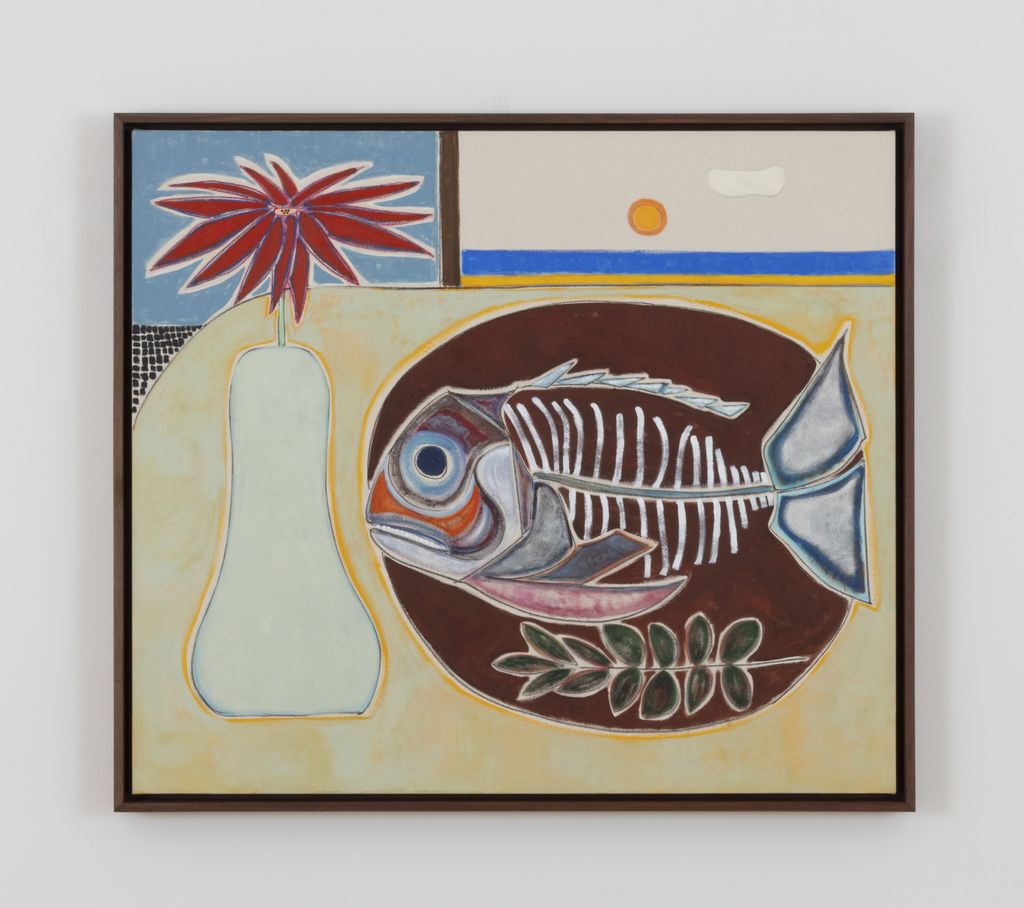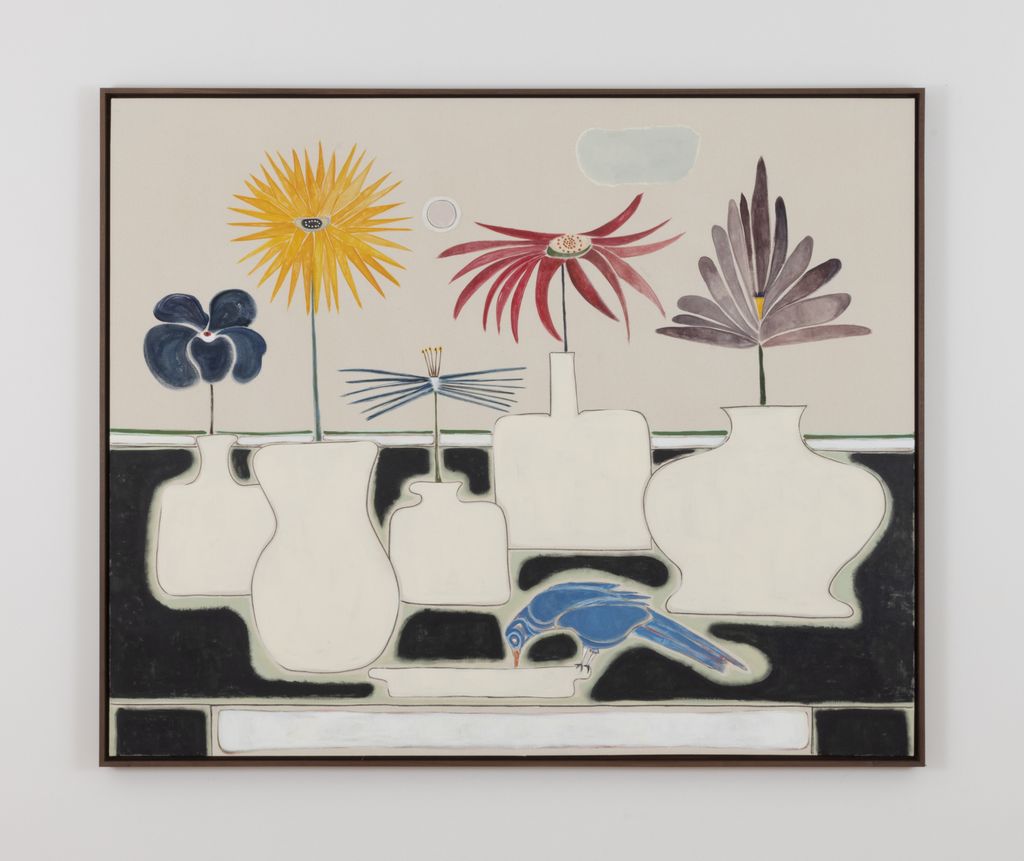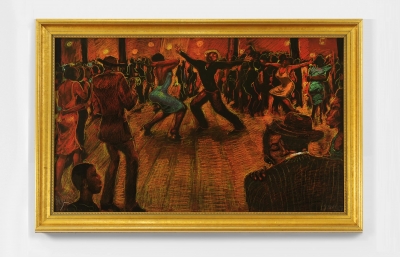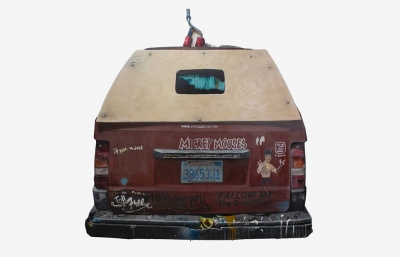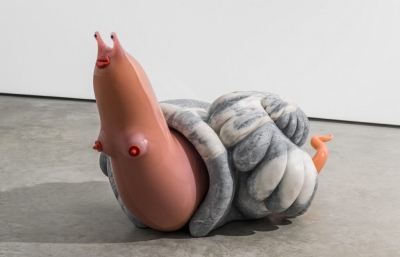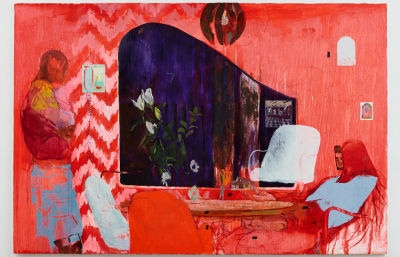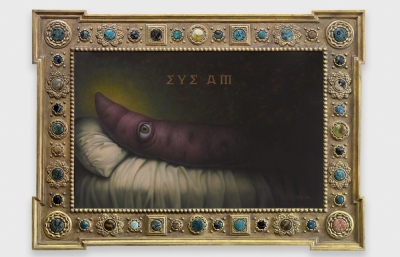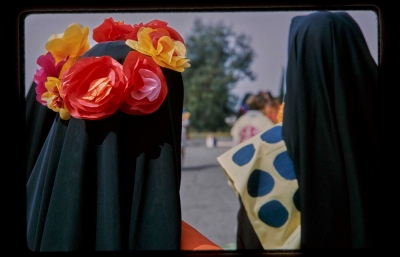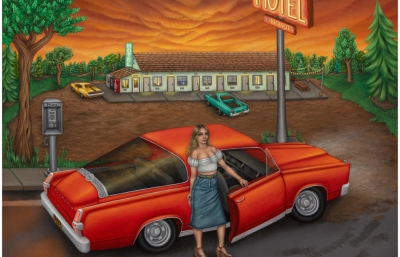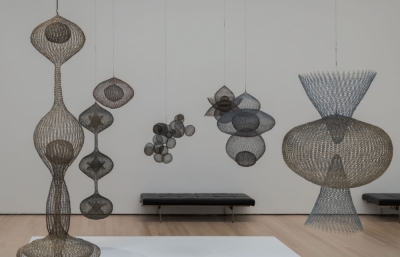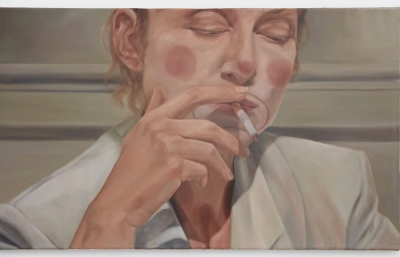Perrotin is pleased to present Table for Us, the first solo exhibition by Japanese-born, New York-based artist Susumu Kamijo at its Hong Kong gallery. In this new body of work, Kamijo reimagines the still life genre with a unique combination of whimsy and surrealism. His compositions layer floral and animal forms to create enigmatic scenes that evoke both nostalgia and a haunting sense of vitality, offering a fresh perspective on traditional motifs.
In Table for Us, Susumu Kamijo’s latest exhibition at Perrotin Hong Kong, the artist transforms traditional still life painting into a vivid exploration of memory and fantasy. Known for his abstract renderings of animals, particularly poodles, Kamijo now turns his focus to an intimate collection of florals and creatures. His compositions, featuring vases, food, and fish, evoke familiarity yet defy traditional still life conventions.
In his application of color, Kamijo alludes to the color-field painters and the amorphous textures of Philip Guston. Broad arenas of blue, orange, and green acquire unexpected depth beneath a gauzy topcoat. At times, his stone-washed flower vases smolder with a sensuous intensity, as seen in the densely packed bloomscape of Summer Blossoms. Despite the simple forms and the more uniform palette of past works, Kamijo’s brilliance as a colorist shines throughout Table for Us.
The paintings in Table for Us carries layers of cultural references and aesthetic influences, from color-field painters to Japanese masters like Itō Jakuchū. Kamijo’s palette recalls Philip Guston’s textures and Van Gogh’s mineral-infused tones, enhancing the dreamlike atmosphere. His controlled use of form and color, coupled with outlines that almost "package" each object, lends a sense of stillness and suspended decay. This technique both protects and distances each element, capturing moments that linger yet resist full comprehension.
Kamijo grew up far from the warmth of the coast, in the mountainous region of Nagano, a landlocked enclave in Japan. His paintings bear no explicit landmarks, yet the flat horizon, contrasting with the rugged backdrop of his childhood, and the recurring sailor's cap quietly hint at a deep-seated longing for the sea, a yearning that ripples through his work as persistently as it did through his early years. It’s as if Kamijo is constructing scenes not from life around us, but from a place of suggestion, memory, and half-glimpsed reverie. Each piece becomes a chimera: an assemblage of everyday objects and animals that evoke a distant world. On a table beside a bird, feathery petals in the painting Red Flower and Pigeon (2024) spread their wings, reaching the eye into the negative space above.
Kamijo’s paintings, rich with cultural hints and geographical cues, leave time in a state of ambiguity. John Ashbery’s line from The Improvement, “We never live long enough in our lives / to know what today is like,” echoes through Table for Us. Each piece functions as a pseudo still life—a frame constructed from imagination rather than direct observation. Even traditional still lifes, in their essence, offer a kind of illusion: an attempt to capture a fleeting present that ultimately resists being held.



